Parisian Walkways: Rue Saint-Jacques

Jeffrey T Iverson visits the oldest street in Paris, whose multi-layered history dates back to the Romans, and discovers a new generation who are taking inspiration from the past.
Paris is a veritable tangle of storied streets, some large and dignified like the Champs-Élysées, some lined with gastronomic delights like Rue Cler, some buzzing with the energy of renewal like Rue Oberkampf. But which among them is the oldest? Ask historians and they’ll point to a 1,555m long road running through the Latin Quarter in the 5th arrondissement – Rue Saint-Jacques. Once the backbone of Lutetia (the Gallo-Roman city on the Seine that became Paris) Rue Saint-Jacques has been trodden for more than 2,000 years, and although no longer the locus of the capital it once was, it remains a street with undeniable charms, a plethora of historic buildings and monuments, a vibrant intellectual life, and alluring shops and restaurants, all of which has made it an eminently desirable place for deep-pocketed Parisians to live, and an engrossing walkway for Paris lovers to explore.
The story of Rue Saint-Jacques begins soon after the Romans conquered Gaul in 52 BC. As a base to keep. watch over their rebellious new province, the Romans founded a city on the Seine which they named Lutetia Parisiorum or “Lutèce of the Parisii”. They situated Lutetia mainly on the Left Bank (being less prone to flooding) over the flank of a large hill – today’s Montagne Sainte-Geneviève – building a central forum at the top. Lutetia would be laid out according to strict Roman rules of urban design, hinged upon a single north–south axis known as the cardo maximus. This 9m wide road, paved with great dressed stones, was named Via Superior, and ran from the Petit-Pont, a small wooden bridge crossing the Seine, up the hill to the forum and out of the city. It wasn’t until the 13th century that the street was christened la Grand’rue Saint-Jacques after the apostle James (Jacques in French).
To walk this street north to south is to brush up against layer upon layer of history. Rue Saint-Jacques begins a block up from the Seine, on the corner of Rue Saint-Séverin – a three-minute trot from the Saint- Michel metro. Fancy a glimpse of the original Roman paving stones from the Via Superior? You’ll find two of them sitting in the courtyard of the ancient church Saint-Julien-le-Pauvre (1 rue Saint-Julien le Pauvre). Also nearby are the Thermes de Cluny – the ruins of a 3rd century Roman bathhouse, now part of the Cluny museum of the Middle Ages (28 rue du Sommerard).
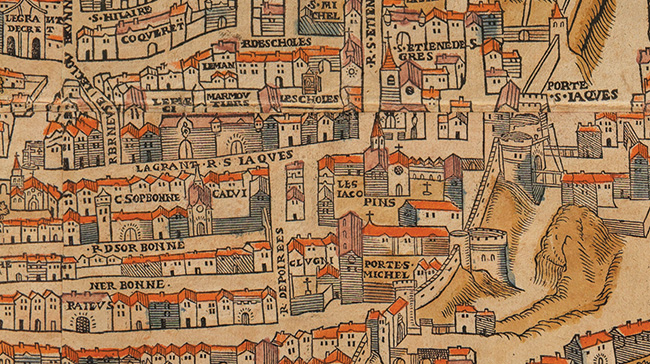
Truschet and Hoyau’s map of Paris
Rue Saint-Jacques remained the central artery of Paris into the Middle Ages, as the numerous medieval churches founded along it attest. At the corner with Rue Saint-Séverin sits the 13th-century Église Saint-Séverin, one of the oldest churches on the Left Bank. With its deliciously ghoulish gargoyles outside, and beautifully sombre Gothic interior, the church transports you to medieval Paris. A tranquil park behind the church draws you off the street, where you can gaze inside a lovely cloister – in reality the vestiges of a medieval graveyard.

A scallop shell decorates the pavement in Rue Saint-Jacques © JT Iverson
During the 13th century, the convent which gave the street its name was founded near today’s nº158 – the Convent of the Jacobins, whose chapel was dedicated to St James (Jacobus in Latin, thus the Jacobins). A cult was forming in this era around the figure of St James, whose remains, the story goes, were discovered in the 9th century in Santiago de Compostela in Galicia in northwestern Spain. The saint’s shrine became a major pilgrimage destination, and a network of roads were established leading there called the Way of St James. The most frequented was the French Way, and believers gathering in Paris began their pilgrimage by walking down Rue Saint-Jacques. The scallop shell, which pilgrims often brought back from Galicia as proof of their journey, became the symbol of St James.
Today, you’ll notice them on the pavements and walls, including on Église Saint-Jacques du Haut-Pas at nº252, where a 14th-century statue of the saint still draws pilgrims. With the founding of the Sorbonne, one of the first universities in the Western world, in 1253 the Latin Quarter became the intellectual hub of Paris. Today, on Rue Saint-Jacques between Rue des Écoles and Rue Soufflot, one is surrounded by prestigious centres of learning, from the Collège de France, France’s leading research establishment founded in 1530, to the elite secondary school Lycée Louis-le-Grand, founded in the 1560s, to the Sorbonne with its 19th-century observation tower and astronomical telescope.

Église Val-de-Grâce was built in the middle of the 17th century © JT Iverson
In 1469, the Sorbonne invited Ulrich Gering to establish the first printing press in Paris. By the 16th century, Paris was the book-publishing capital of Europe. As historian Eric Hazan writes in The Invention of Paris: “Between the river and Rue des Écoles, a number of old bookshops-cum-publishers remain to remind you that until the end of the Ancien Régime, Rue Saint-Jacques had a virtual monopoly of printing.” Publishers like Librairie Bussière (esotericism) at nº34 and Librairie J. Vrin (philosophy) at nº71 continue this literary tradition, as do antiquarians like Librairie Jacques Benelli at nº244 and Librairie Vignes at nº57, where you might buy a €30,000 first edition of Charles Baudelaire’s 1857 Fleurs du Mal.
Continuing south along Rue Saint-Jacques one reaches the top of the Montagne Sainte-Geneviève at Rue Soufflot. Looming to the left is the Panthéon – the great domed neoclassical monument chosen by the French Republic to honour its most illustrious citizens – situated almost exactly where the Romans built the forum of Lutetia. In the Middle Ages, at this level of Rue Saint-Jacques one would have encountered a gate which was part of Philip II’s wall around Paris. Upon exiting Paris, the road would have continued towards Orléans, lined with fields, country homes and inns, convents and abbeys. Today, as one crosses Rue Soufflot, stepping through the imaginary gate and continuing south on Rue Saint-Jacques, the road suddenly narrows and becomes more intimate, more village-like, with small boutiques and restaurants, a greengrocer and a cheese shop… It’s not quite the countryside, but there is a distinct sense that one is leaving part of Paris behind. Yes, Rue Saint-Jacques is a street where the past is almost palpable – and that quality is shared by many of the street’s most interesting shops and restaurants.

Pâtisserie du Panthéon © JT Iverson
Past Meets Present
It was partly nostalgia for the past that led Sébastien Dégardin and his wife Sandrine to open their elegant pastry shop La Pâtisserie du Panthéon at 200 rue Saint-Jacques in 2013. Dégardin recalls his first visit to this magnificent circa-1920 former charcuterie shop, with its original Art Deco painted ceilings and marble shelves. “I adored this shop,” he says. “It’s so rare to find historic boutiques like this anymore, and it made me think of my father, who was a charcutier!” A good omen no doubt, though the success of his shop is mostly thanks to Dégardin’s nearly two decades as pastry chef to some of France’s greatest restaurants, including Maison Troisgros and Pierre Gagnaire. That education left Dégardin with impeccable standards and technical virtuosity, but also a sense of humility.
“When the time for dessert arrives, the challenge of the pastry chef is to inspire a desire in people who may no longer be hungry,” he says. “You do this by appealing to their memories – their childhood souvenirs of crêpes, vanilla ice cream, strawberries… If you create a dessert that in essence is quite simple, yet perfectly mastered and with a touch of creativity, people will eat without hunger.” Which is the case with every creation by Dégardin, who infuses traditional French pastries with an extra dose of inspiration and gourmandise, topping pastries with titillating decorations that offer a foretaste of the flavours inside, like cubes of pâte de fruit, flavoured guimauves (marshmallows), or caramelised almond craquantes – indulgence upon indulgence. “For me,” says Dégardin, “la pâtisserie is about conviviality and generosity – it’s about sharing.”
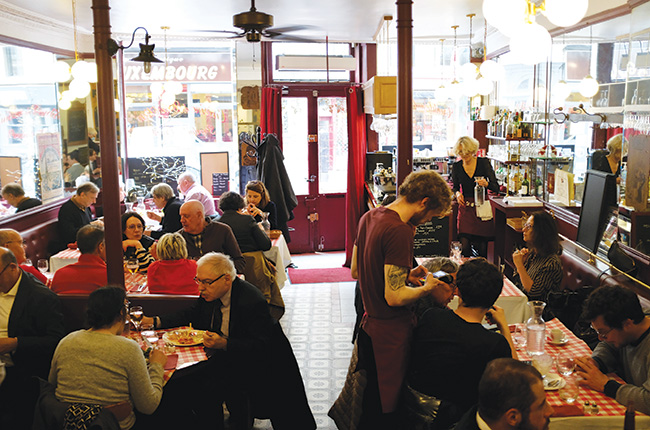
Le Perraudin was once a favourite haunt of Hemingway’s
Just across the street at nº157, that spirit of generosity also animates the 19th-century bistro Le Perraudin, acquired in 2018 by France Blin. “It’s a piece of living heritage, which needed to be restored to its former glory,” she says. “So that’s been my lovely challenge, to continue the history of Le Perraudin, by bringing it back to life.” Which France has done superbly, restoring the bistro’s original décor, hiring a warm, jovial waiting staff, and refocusing the menu on the kind of traditional, made-from-scratch French dishes that made Le Perraudin a favourite of Ernest Hemingway a century ago.
That ability to keep a venerable institution in tune with the times is shared by Olivier Roblin, the owner of Les Caves du Panthéon, a wine shop which was founded in the 1940s. Since acquiring the shop in 2009, Roblin has maintained precious relationships cultivated with estates over decades which allow him to stock his shelves with some of the rarest cuvées of Burgundy and the Rhône. Yet Roblin has also become a renowned specialist of exceptional natural wines made without sulphites, and he has been laying down a collection of thousands of bottles over the years to prove their under-appreciated capacity to improve with age. “Slowly, I’m creating a veritable patrimony of old vintage natural wine,” says Roblin. “For me, it’s the most satisfying project of my career.”
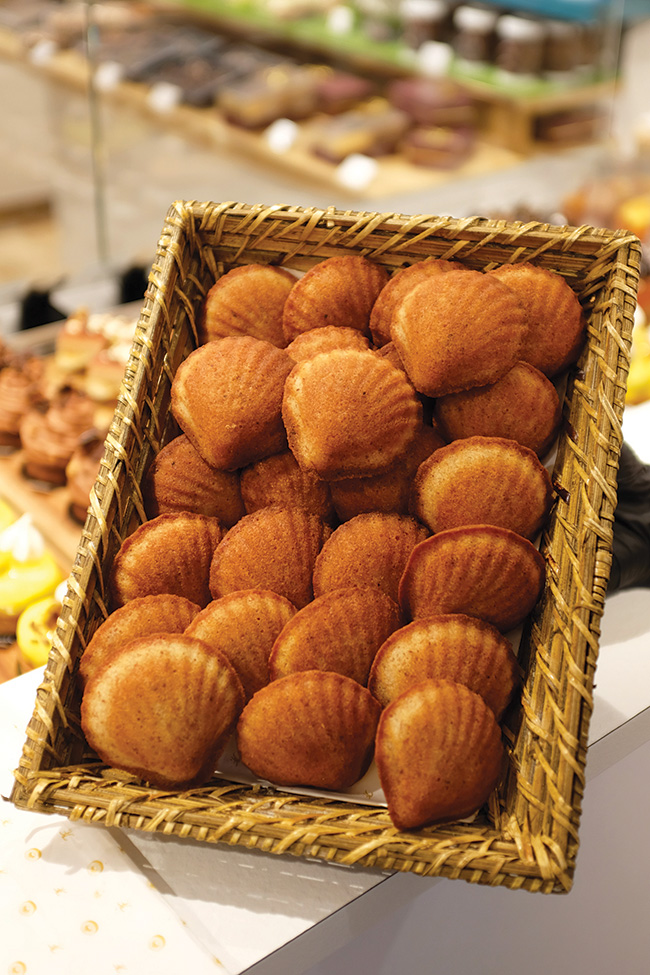
Julien Filoche’s Pâtisserie de Voyage is the place to go for sweet treats © JT Iverson
Voyage of Discovery
Nearby at nº177, chef Julien Filoche founded a unique shop in 2020 called Pâtisserie de Voyage – an old French term which refers to traditional cakes and cookies that share the characteristic of being easily transportable, making them ideal gifts for travellers. With his collection of delights, Filoche offers a tour de France of regional specialties. He’s even made a special financier (a small, buttery, almond-flavoured cake) in honour of Rue Saint-Jacques – in the form of a scallop. “The historic dimension of this place is important to me,” he says. “The soul of Paris is here.”
Bruno Solques heartily agrees; the boulanger and ceramic artist has been baking fabulous sourdough breads for 21 years at 243 rue Saint Jacques, 200m from the 17th-century church of Val de Grâce. “Work on such an ancient street has been interesting,” he muses. “It doesn’t seem to evolve as quickly as the rest of Paris, it’s a street that has remained rather stable, with a well-to-do clientele that has been very faithful through the years, which is also why there are so many old businesses here still.”
Among them is the toy store Bass, founded at nº229 in 1969, and dedicated to traditional, handmade toys. “For the residents of this neighbourhood, Jouets Bass is an institution,” says its manager Clothilde Musnier. “We have clients who came here as a child who now return to buy toys for their grandchildren. That makes us feel a responsibility to care for this piece of local heritage. So it makes us happy when people say they feel this shop still has its soul today.” And couldn’t the same be said of Rue Saint-Jacques? It’s a street with a soul and memories still intact after all these years. For Francophiles, it’s a street that reminds us of that first trip to Paris, that first meal enjoyed in a real Parisian bistro, that first bottle of good French wine, that first crunch of a fresh baguette, that first vanilla millefeuille… It’s a street to make you fall in love with Paris all over again.
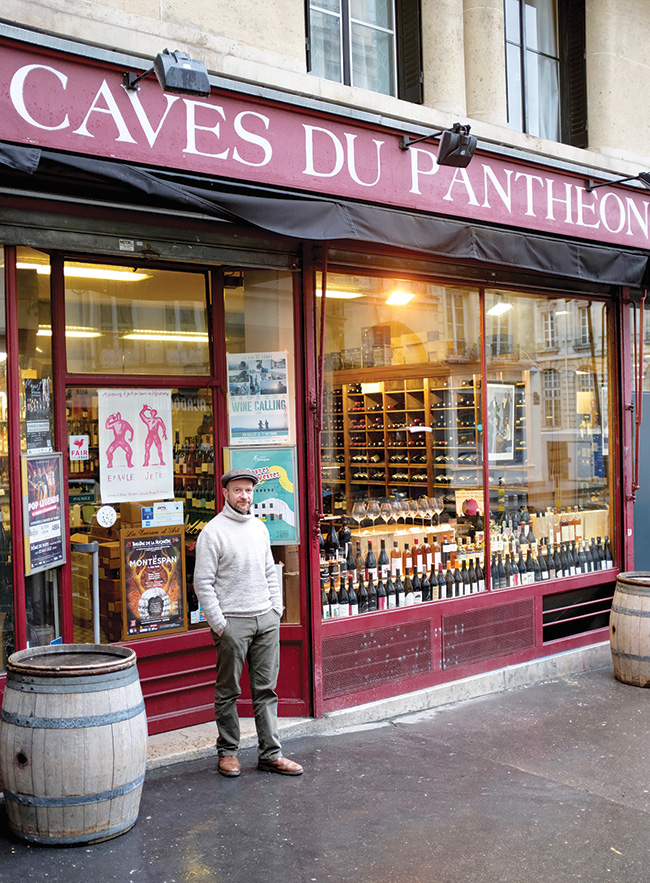
Caves du Panthéon © JT Iverson
Businesses around Rue Saint-Jacques
Les Caves du Panthéon
174 rue Saint-Jacques
Tel. +33 1 46 33 90 35
The shelves of this charming 1940s wine shop boast numerous iconic wines – Domaine Jamet Côte Rotie, Domaine Roulot Meursault, Cécile Tremblay Vosne-Romanée – the fruits of a network of relationships built over decades. Yet, owner Olivier Roublin is also a defender of the avant-garde, with a deep cellar of old natural wines proving that wine made without sulphur can age beautifully too.
Pâtisserie du Panthéon
200 rue Saint-Jacques
Tel. +33 1 43 07 77 59
After a career perfecting his craft as a pastry chef in some of France’s most illustrious restaurants, from Maison Troisgros to Pierre Gagnaire, Sébastien Dégardin opened this enchanting pastry shop alongside his wife, Sandrine, in 2013. Gourmets now flock here from across Paris to indulge in his pastries of exceptional quality and value, which titillate the eyes and delight the palate.
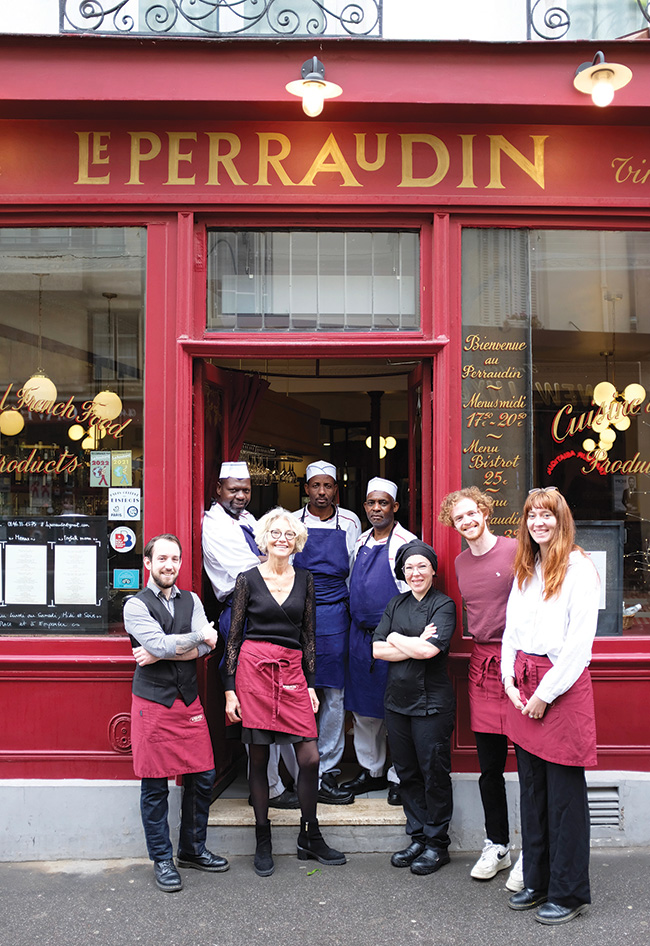
Le Perraudin © JT Iverson
Le Perraudin
157 rue Saint-Jacques
Tel. +33 1 46 33 15 75
They say when Hemingway was low on cash but hungry for a good meal, he came to Le Perraudin, and even now it’s easy to see why. Founded in 1872, with its zinc bar, chequered tablecloths and gregarious waiters, Le Perraudin resembles the quintessential French café. Expect a busy bistro full of happy locals enjoying classics like boeuf bourguignon and other traditional French dishes loved by Ernest.
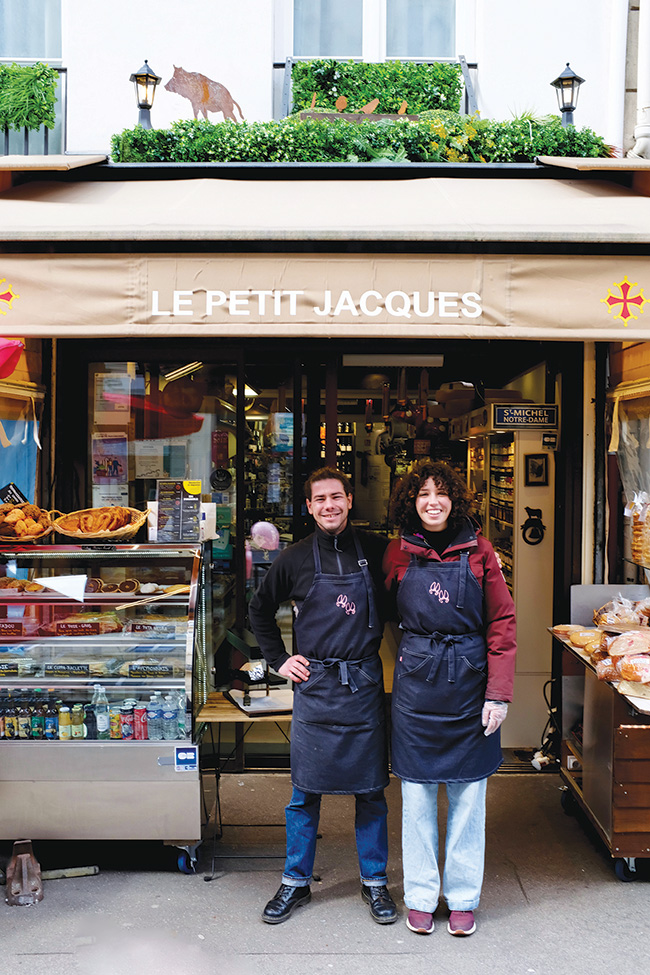
Le Petit Jacques © JT Iverson
Le Petit Jacques
248 rue Saint-Jacques
Tel. +33 1 42 49 60 73
This delicatessen brings the numerous gastronomic delights from France’s Aveyron region to Paris. The friendly, knowledgeable staff will tempt you with a plethora of charcuterie, terrines and foie-gras, as well as excellent farm-fresh cheeses, jams and honey, and a wide variety of wines, beers, armagnac, and rare regional liqueurs and apéritifs – plus aligot (the cheesy Averyon potato dish) to go!
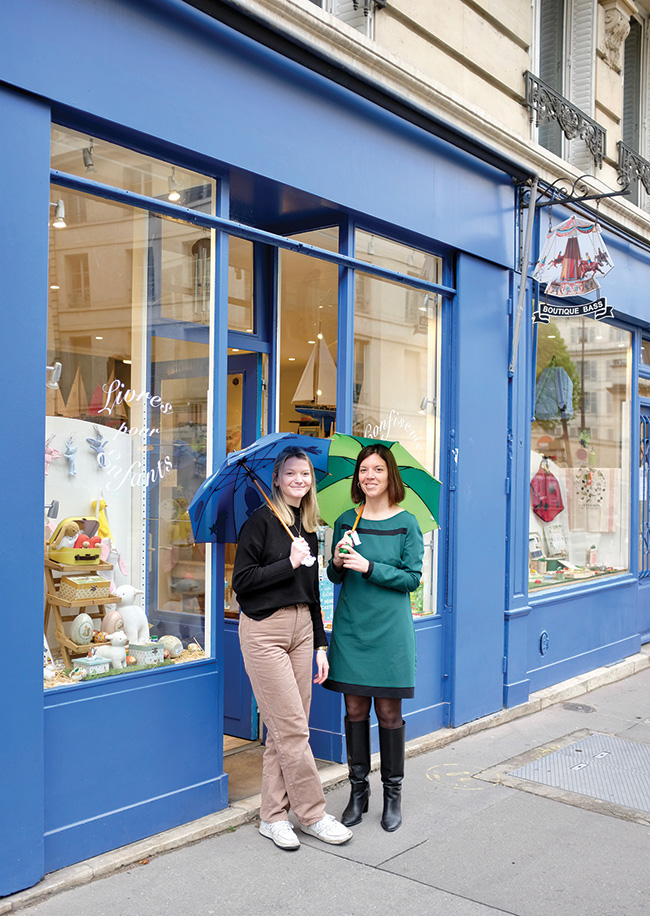
La Boutique Bass © JT Iverson
La Boutique Bass
229 rue Saint-Jacques
Tel. +33 1 42 01 36 34
Since 1969, this toyshop has been a paradise for children of the 5th district. The late Monsieur Basselier founded his boutique at a time when authentic, handmade jouets were becoming a rarity, and he scoured France and Europe for the last artisan toymakers. Today, Bass offers a plethora of traditional wooden toys, marionettes, music boxes and night-lights from small French and European producers.

Boulangerie Solques © JT Iverson
Boulangerie Solques
243 rue Saint-Jacques
Tel. +33 1 43 54 62 33
For 21 years, in a 17th-century building on a tranquil stretch of Rue Saint-Jacques, Bruno Solques has been providing his clientele with its daily bread. A boulanger like no other, by day Solques transforms fabulous flours from heritage wheat varieties into delicious sourdoughs and handmade viennoiseries, and by night he moulds clay into a menagerie of ceramic animals to decorate his shop.
From France Today magazine
Lead photo credit : Rue Saint-Jacques is still thriving after 2,000 years
Share to: Facebook Twitter LinkedIn Email
More in best places in Paris, boulangeries, French cafes, French food, French history, Paris, patisseries
Leave a reply
Your email address will not be published. Required fields are marked *



